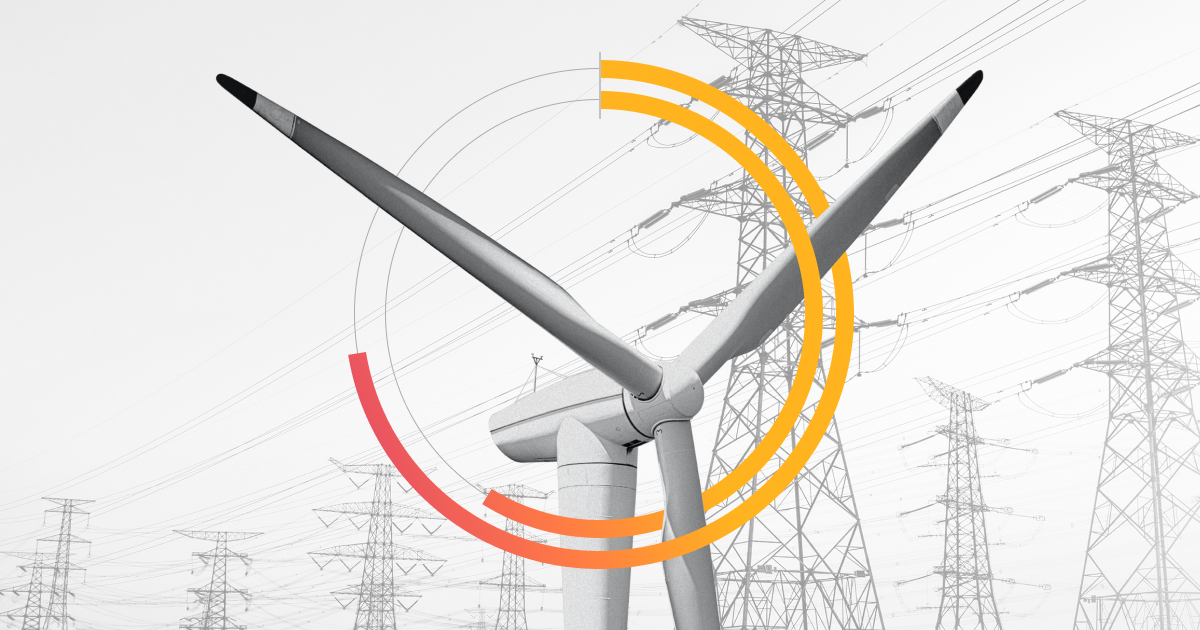In 2025, Jaguar Land Rover’s UK manufacturing operations ground to a halt for nearly a week; Not due to a faulty part or labor dispute, but because of a cyberattack that originated from a lower-tier supplier. This disruption underscores a hard truth: vulnerabilities buried deep in a supply network can create consequences that reverberate across continents.
Supply Chain Risk Management (SCRM) is no longer a procedural function confined to procurement or logistics. It now plays a pivotal role in business continuity, cybersecurity, regulatory compliance, and strategic decision-making. This guide offers a comprehensive and forward-looking exploration of SCRM, combining practical frameworks with emerging insights to help organizations navigate the complex landscape of global supply chain risk.
What Is SCRM?
SCRM is the process of identifying, assessing, mitigating, and continuously monitoring risks that could disrupt the operations of a supply chain. These risks can arise from various sources, including natural disasters, supplier insolvency, cyberattacks, geopolitical tensions, trade policies, and pandemics.
An effective SCRM strategy ensures continuity of supply, protects brand reputation, supports compliance, and preserves financial performance by proactively addressing both expected and unforeseen disruptions.
For example, during the COVID-19 pandemic, companies with robust SCRM frameworks were able to pivot more quickly: finding alternate suppliers, adjusting inventory models, and maintaining critical operations. Similarly, the impact of rapidly shifting tariffs over the past decade has shown how political decisions can drastically reshape sourcing and manufacturing strategies.
What’s Driving Supply Chain Risk?
In today’s volatile climate, risk manifests in both familiar and unfamiliar forms. Several categories now demand elevated attention:
- Climate-Linked Disruption: From Canadian wildfires to floods in Asia, extreme weather is impacting transportation corridors, production hubs, and energy availability with greater frequency and severity.
- Third-Party Cyber Vulnerabilities: A growing share of breaches now originate via indirect access points, such as contractors, software vendors, and logistics partners. These risks often bypass perimeter defenses, requiring deeper scrutiny of digital interdependencies.
- Geopolitical Volatility and Trade Barriers: Export controls, sanctions, and fluctuating tariffs are altering global sourcing strategies and impacting supply chain costs. The U.S.-China trade war and post-Brexit trade adjustments are prime examples of how quickly market access can change.
- Pandemics and Health Crises: As the COVID-19 pandemic demonstrated, health emergencies can paralyze global logistics, strain labor markets, and upend demand forecasting. Preparing for future outbreaks now forms a core part of SCRM planning.
- Supplier Solvency Risks: Economic stressors are weakening the financial stability of upstream providers, especially SMEs. Disruptions from insolvency are rarely linear. They often trigger a domino effect across production schedules and contractual obligations.
- Regulatory and ESG Compliance: Regulations such as the German Supply Chain Due Diligence Act and the EU Corporate Sustainability Reporting Directive (CSRD) are introducing new dimensions of operational and reputational exposure.
While each of these risk categories merits attention, their convergence, and the potential for one to exacerbate another, is what makes them particularly challenging. Risk cannot be managed in silos.
Building a Modern Supply Chain Risk Management Framework
The most resilient organizations approach SCRM not as a checklist, but as a system of systems: integrating data, analytics, governance, and human judgment.
Multi-Tier Visibility is foundational. Companies are moving beyond Tier 1 supplier mapping to build multi-layered visibility using trade data, ownership structures, and graph-based analytics. This illuminates hidden dependencies and helps surface concentration risk.
Risk Prioritization requires more than intuition. Leading firms are applying financial-style value-at-risk (VaR) models to estimate potential exposure from specific disruption scenarios. These models factor in both likelihood and impact, enabling better resource allocation.
Predictive Monitoring is gaining traction. Machine learning algorithms analyze trends in supplier behavior, such as late shipments, financial stress signals, or adverse media mentions, to flag early warning signs. While these tools enhance foresight, governance and interpretability remain crucial.
Cyber Risk Integration is no longer optional. Cybersecurity reviews are being embedded into procurement processes, with contractual clauses, vulnerability scanning, and real-time threat intelligence becoming standard practices.
Dynamic Risk Dashboards offer a continuously updated view of network health, aggregating internal data with external signals such as credit ratings, regulatory changes, and environmental alerts.
Together, these elements form a flexible framework that can evolve as threats emerge and as the supply network itself changes.
Real-World Examples of SCRM in Action
Understanding the principles of supply chain risk management is essential, but seeing how they unfold in practice adds critical perspective. These real-world examples showcase how leading organizations are applying SCRM strategies to manage disruption, improve resilience, and turn risk into a catalyst for smarter operations.
Jaguar Land Rover learned firsthand how a small vulnerability can create outsized consequences. After a ransomware attack on a Tier 2 supplier disrupted operations, the company invested in deeper visibility tools and stricter cyber risk protocols.
A Fortune 200 food services company discovered that over two-thirds of its Scope 3 emissions came from a relatively small set of suppliers. By focusing on this core group, the company not only accelerated progress toward its science-based targets but also built stronger, more collaborative relationships with key partners.
The U.S. logistics sector, facing a spike in cargo thefts, many involving impersonation of legitimate carriers, has begun adopting blockchain-based verification systems and dynamic asset tracking to secure goods in transit.
These examples reveal a common theme: timely insight, cross-functional coordination, and targeted action often make the difference between resilience and reaction.
Implementing a Strategic SCRM Program: Step-by-Step
Developing a modern risk management strategy doesn’t require a complete overhaul overnight. A phased, structured approach can yield meaningful progress, but only when paired with day-to-day actions that embed risk awareness into operational rhythms.
- Establish cross-functional alignment. Host a quarterly risk roundtable that includes leaders from procurement, cybersecurity, operations, finance, and compliance. Assign clear owners to each risk domain and establish shared KPIs that track joint accountability—not just siloed goals.
- Invest in supply network mapping. Start small: select one product line or region and map all known Tier 1 and Tier 2 suppliers. Use existing procurement data, invoices, and shipping records to uncover relationships. Consider layering in tools that analyze trade data or vendor hierarchies to enrich the view.
- Segment supplier risk. Create a supplier risk matrix using criteria such as financial health, geographic exposure, criticality to operations, and ESG compliance. Automate a monthly refresh using data from third-party risk platforms or financial feeds, and review it with your category managers.
- Run disruption simulations. Pick three realistic risk scenarios—like a port closure, a cyberattack on a logistics provider, or a regional political disruption. For each, work with relevant teams to model impact (e.g. revenue at risk, lead time disruption), and document your current and ideal responses. This forms the basis of your supply continuity playbook.
- Implement real-time monitoring and alerting systems. Set up automated alerts for supplier credit downgrades, factory shutdowns, or policy changes using third-party data aggregators. Supplement that with internal triggers, such as purchase order delays or missed milestones, configured in your ERP or supplier management system.
- Build flexibility into your sourcing strategy. Identify your most vulnerable single-source dependencies and establish alternative suppliers or substitute materials. Where diversification isn't feasible, negotiate dual-location production capacity or prioritized service-level agreements. Ensure contracts include realistic lead times and recovery clauses.
These activities shouldn’t live only in annual planning documents. Embedding them into weekly ops reviews, monthly supplier meetings, and quarterly risk check-ins ensures that SCRM becomes a living, adaptive capability.
Building an effective SCRM program is about continuous improvement, proactive thinking, and cross-functional collaboration. With a structured plan and practical habits in place, organizations can shift from reactive firefighting to a more agile, resilient posture that better withstands today’s complex risk landscape.
What's Ahead For Supply Chain Risk Management
The future of SCRM will likely be shaped by a combination of emerging technologies and regulatory evolution. Digital twin platforms may become more widely adopted, allowing companies to simulate supply chain performance under varying conditions. This could enable more precise scenario planning and capital allocation.
Artificial intelligence will continue to expand its role, but so too will its associated risks. Model validation, data lineage, and adversarial resilience will become key components of supply chain system governance.
On the regulatory front, we can expect increased harmonization and enforcement, particularly around climate disclosure, forced labor, and cyber-physical resilience.
Lastly, supply chain sovereignty, driven by political and national security considerations, may prompt a rebalancing of global footprints. Companies will need to weigh cost efficiency against resilience, ethics, and regulatory alignment.
A Foundation for Resilient Supply Chains
Supply chain disruptions are no longer exceptional events; they are a constant business reality. The companies that thrive in this environment will be those that invest early in visibility, resilience, and proactive management.
By mapping your supply chain, engaging suppliers, implementing centralized systems, and aligning with global frameworks, you not only protect your business from costly disruptions, you also position it to seize opportunities in a volatile, fast-changing world. Supply chain risk management is about building a resilient foundation that enables growth, innovation, and long-term business value.
First Recon was built to deliver that foundation. As your always-on AI Agent for supply chain risk management, it provides real-time monitoring, predictive insights, and compliance support, helping you act before disruptions hit. Join the waitlist to get early access, exclusive updates, and insider tips and insights.


